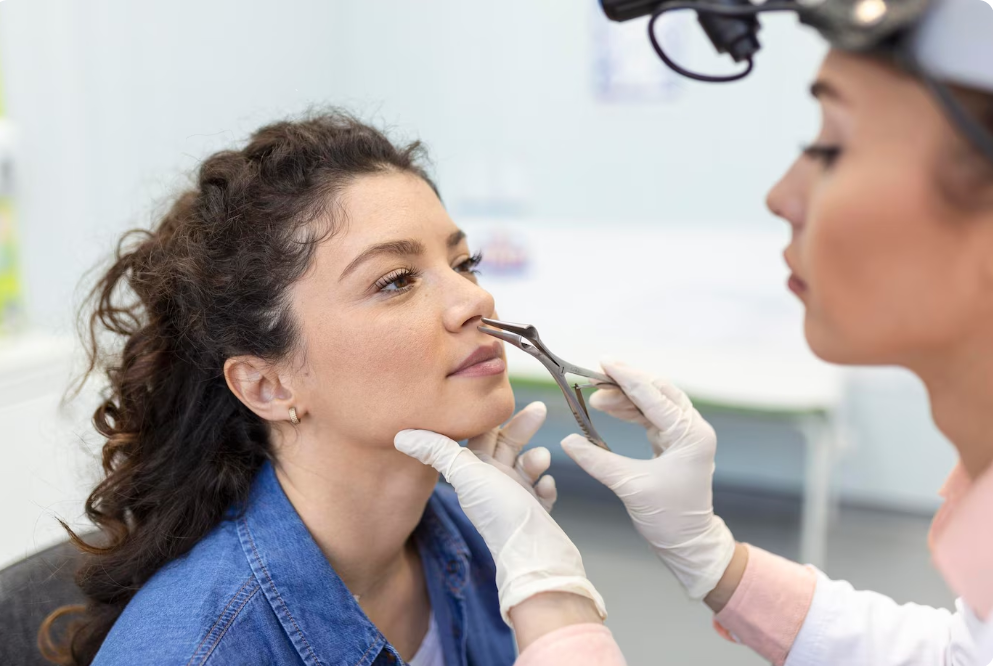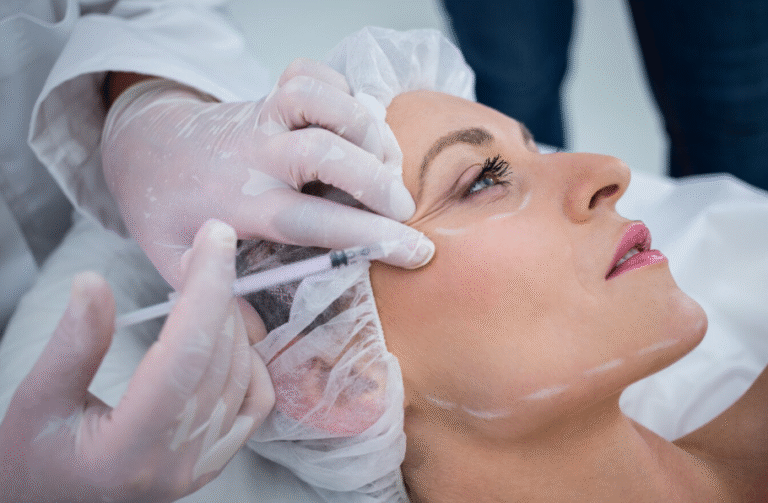Treatment Overview
Genioplasty, also known as chin reshaping surgery, is a highly specialized cosmetic procedure that modifies the shape, size, or projection of the chin to improve facial harmony. Unlike chin implants, genioplasty involves surgical movement or reshaping of the patient’s own chin bone. In Korea, this procedure is performed using advanced techniques like sliding genioplasty or bone shaving, allowing for precise, natural-looking enhancements.
Korean plastic surgeons are globally recognized for their expertise in facial contouring, making Korea one of the most trusted destinations for genioplasty.
Purpose & Benefits
The main goal of genioplasty is to correct chin imbalances that affect facial proportions and profile. Benefits of the procedure include:
- Enhanced facial balance and symmetry
- Improved jawline definition and side profile
- Correction of a recessed, protruding, long, or asymmetrical chin
- Permanent, natural-looking results
- Can correct functional concerns like bite issues (when combined with orthognathic surgery)
Whether for aesthetic or structural improvement, genioplasty offers long-term enhancement to facial aesthetics.
Ideal Candidates
Genioplasty is ideal for individuals who:
- Have a weak, recessed, protruding, or asymmetrical chin
- Feel that their chin size disrupts overall facial harmony
- Are in good general health with realistic expectations
- Have completed facial growth (typically age 18+)
- Want a permanent, customized solution instead of chin implants
Both men and women pursue genioplasty to enhance their side profile and overall facial proportions.
Possible Risks & Complications
While genioplasty is considered safe when performed by experienced Korean surgeons, possible risks include:
- Swelling, bruising, or temporary numbness
- Minor asymmetry or contour irregularities
- Infection or bone healing issues
- Nerve damage (lower lip or chin numbness—usually temporary)
- Dissatisfaction with cosmetic results
Choosing a board-certified facial bone specialist in Korea significantly minimizes these risks.
Surgical Techniques Used
Korean clinics use several advanced techniques for genioplasty based on the patient’s unique goals and facial structure:
Sliding Genioplasty
- The most common technique in Korea
- The chin bone is cut horizontally (osteotomy), moved forward, backward, upward, or downward, and fixed with biocompatible plates and screws
- Allows for precise, 3D contouring and profile enhancement
- Completely customized, using the patient’s own bone
Vertical & Horizontal Chin Reduction
- Bone shaving or trimming used to reduce chin height or width
- Often combined with sliding techniques for subtle refinements
T-Geniplasty or V-Line Genioplasty
- Advanced Korean methods for narrowing and softening the lower face
- Commonly used in facial feminization or for patients seeking a more delicate chin shape
Most procedures are done via intraoral incision (inside the mouth), leaving no visible scars.
Recovery & Aftercare
Recovery from genioplasty in Korea is generally manageable:
- Swelling peaks in the first few days and improves over 1–2 weeks
- Minor discomfort or numbness may last for a few weeks
- Soft diet is recommended for 1–2 weeks
- Most patients return to work or daily activities within 10–14 days
- Full results appear in 1–3 months as swelling subsides
Korean clinics offer advanced post-op care such as anti-swelling therapies, LED treatment, and lymphatic massages to support faster recovery.
Results & Longevity
The results of genioplasty are permanent and tailored to the patient’s facial structure. Outcomes include:
- A more defined and balanced chin
- Enhanced jawline and side profile
- Improved facial harmony and symmetry
- Long-term satisfaction with little to no maintenance required
As the bone heals naturally, results become more refined over time and do not shift unless further surgery is performed.
Treatment Process in Korea
Korea is a top destination for genioplasty due to its reputation in facial contouring surgery. The treatment process typically includes:
- In-depth consultation with 3D imaging and facial analysis
- Personalized surgical planning based on facial structure and desired results
- Use of advanced surgical tools and high-precision bone cutting systems
- Comprehensive post-operative care and support for international patients
- Multilingual staff and package options for overseas visitors
Korea’s facial bone surgeons focus on subtle, natural improvements, with an emphasis on symmetry and minimal invasiveness.
Cost Range
The cost of genioplasty in Korea generally ranges from $4,000 to $8,000 USD, depending on:
- Complexity of the procedure (sliding vs. combined with other contouring)
- Surgeon’s experience and clinic reputation
- Pre-operative imaging and simulation technology used
- Post-operative care and accommodation for international patients
Clinics often offer all-inclusive packages for foreigners, covering consultation, surgery, recovery treatments, and translator assistance.
Popular Clinics
Top clinics in Korea known for genioplasty and facial bone surgery include:
- ID Hospital – Leading center for facial bone surgery, offering sliding and V-line genioplasty
- Banobagi Plastic Surgery – Specializes in customized jaw and chin reshaping with natural outcomes
- View Plastic Surgery – Offers high-tech 3D simulations and international patient services
- Girin Plastic Surgery – Known for delicate bone contouring techniques and balanced aesthetic results
- Woori Plastic Surgery – Popular for facial symmetry corrections and expert chin surgery
These clinics feature advanced technology, English-speaking coordinators, and a strong reputation for safety and patient satisfaction.




